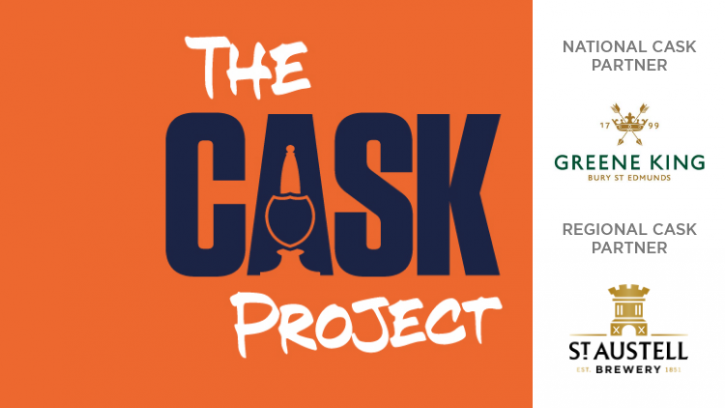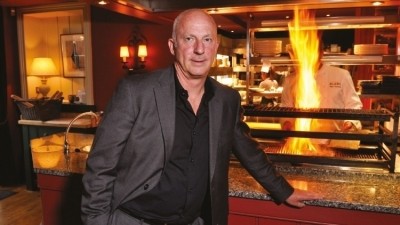The Cask Project
Extending the life of cask beer

One company is claiming to have found just such a solution. Cambridge Scientific Solutions (CSS) has created a piece of technology called Beer Saver that clips over cask ale (and kegged) beer lines, which it claims has been proven to make the drink last, without depreciation, for up to 21 days after a trial at one pub – eclipsing the current recommended standard of only having a cask beer on the bar for three days.
While there are alternative systems, such as Heineken’s SmartDispense and Carlsberg Quality Dispense, that ensure beer quality is retained through differing methods, these have been primarily aimed at kegged beer products.
Where Beer Saver differs is that it can be applied to both keg and cask and has been going through tech development since its inception in 2002 when CSS managing director Ian Lee set the business up.
Simon Barratt became part owner and sales & operations director more recently and explains how Beer Saver works.
He says: “It all goes in the cellar. You don’t have to take any lines apart or disconnect anything. These are coils that just clip over the beer lines so there’s no interfering with brewery technology and equipment. We just come along and click it on. It’s really easy to install which means it’s really easy to uninstall.”
While the product has been around for some time, the development of rival systems, such as SmartDispense, has opened the market and changed perceptions on line cleaning. Barratt says: “People’s perceptions of not cleaning the lines on a weekly basis has gone from ‘oh no, that’s the devil, we’re always going to clean our lines on a weekly basis’ to now ‘yeah we’ve been talking to Heineken or we’ve been talking to Carlsberg and now we see we don’t have to clean as often’.
“Our system is non-invasive, very reasonable, very good value for money and it’s free to trial.”
Absolutely incredible
CSS uses electromagnetic technology and own the patents on it while Heineken and Carlsberg regulate temperatures on the products used in their set-ups.
“We’ve done the tube in tube air-type scenarios, which is what goes in their systems, and when you combine their tech and our system, you end up with clean cycles of up to 20 weeks. That means just two cleans a year are [theoretically] needed – it’s absolutely incredible.”
When it comes to the application for cask beer, Barratt says the technology was getting support from the Campaign for Real Ale (CAMRA), with members sampling products 21 days after tapping and reporting the quality as excellent.
The system is the same whether being used on a cask or kegged beer. Barratt says: “Within the system, we’re creating an electromagnetic saw tooth wave or sine wave. The sawtooth wave is a jagged multi-frequency wave and the sine wave is the sort of the bell curve we are used to for music waves – a smooth up and down, peaks and troughs. This is what is travelling up and down the beer lines, it’s going down into the draught kegs and it’s going all the way up into the taps.”
He says the impact on cask was something of a surprise outcome, and they are “not entirely sure” how the science works!
“Our best guess is it’s stopping the bacteria from getting to a stage where a biofilm is formed and so bacteria is desperately trying to form the biofilm – it wants to find a nice place to settle. That is a place where it’s got the right temperature, plenty of food and it can start reproduction and create a biofilm.
“The biofilm is a result of lots of different secretions, hormones, different sorts of chemicals, proteins that come out of bacteria and a lone bacteria can’t create enough to generate the biofilm so it has to work as a culture, as a community, as a team.”
Messing with hormone signals
He continues: “To do that, the bacteria is sending out a hormone signal to say to other bacteria ‘I’m here, is there anybody else there?’ It’s called quorum sensing. This signal is basically telling other bacteria that if there’s more bacteria around, it must mean we found a good place to settle because there’s a bit of food and it’s not too cold or too hot.
“Then it works on biofilm formation by creating a protective layer over the top of itself and then it goes into a frenzy of reproduction. Part of this process of reproducing is the expulsion or secretion of toxins that get out into the beer that makes the beer fobby and taste bad. It’s not the bacteria itself that’s causing the problem, it’s the by-product of the bacterial life cycle.”
So the Beer Saver system is messing with the hormone signal and stopping the bacteria from moving into biofilm formation and, as a result of that, “it’s just floating around like a lone bacteria, trying to reproduce but at a nice slow rate and nothing that’s overcoming the system and that’s allowing us then to come and do these cleans at extended intervals to get rid of whatever bacteria is in the system before it gets to levels where the toxins are affecting the beer quality”.
However, it’s a completely different process that causes the cask beer to go bad. Barratt says experts and some “really big companies” are involved in testing this.
He continues: “They’re basically saying when oxygen gets into the cask, it causes it to go off. It leads us to a conclusion that there’s a different process going on [with our kit] that is inhibiting the process and stopping it going off.
“What we do know is when we apply this technology to the cask lines – as we do to keg – we’re ending up with an extended life span of the products but what’s causing it down at the sort of chemical level or biological level is, for the time being, a bit of a mystery to us if I’m completely honest.”
He concludes once a cask has run empty, licensees should carry out a full line clean. “You might as well because you’re not wasting any products because you’ve sold it all,” Barratt says. “The benefit for the system on cask is you get an extended shelf life.
“The real benefit is giving licensees the ability to put more cask products on the bar because you’ve got more time to sell it all. So rather than having two casks on the bar, put four on and give the customer more choice.”
Greene King’s tech
Meanwhile, Aaron Potton, head of quality and dispense at Greene King Brewery says: “While we are not able to comment on the Beer Saver unit, Greene King has been using similar technology in some of its pubs.
“The high-quality electromagnets attached to beer lines does offer benefits that reduce the frequency of build-up between line cleaning and reduces the chance of spoilage and contamination while the beer is in the line, but only up to a maximum of 21 days.
“The introduction of the electromagnet still requires the pub to clean the lines to a very high standard following best practices and recommendations from the brewer and chemical manufacturer.
“The basics required to deliver high-quality cask and keg products to the consumer are hygienic cellar conditions, correctly cleaned beer lines, correct temperature controls and finally, a rate of sale that matches the container size to deliver a fresh product for the consumer.
“Having used similar apparatus in our pubs, while it does have clear benefits, we have not seen any evidence that supports extending the life of cask on sale by introducing electromagnets.
“Cask ale deterioration while on sale is due to oxidisation and cellar temperature controls and is why, as a brewer, we stand firm on the three-day rule.”







